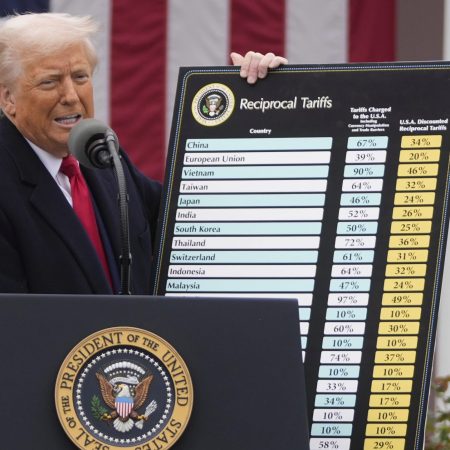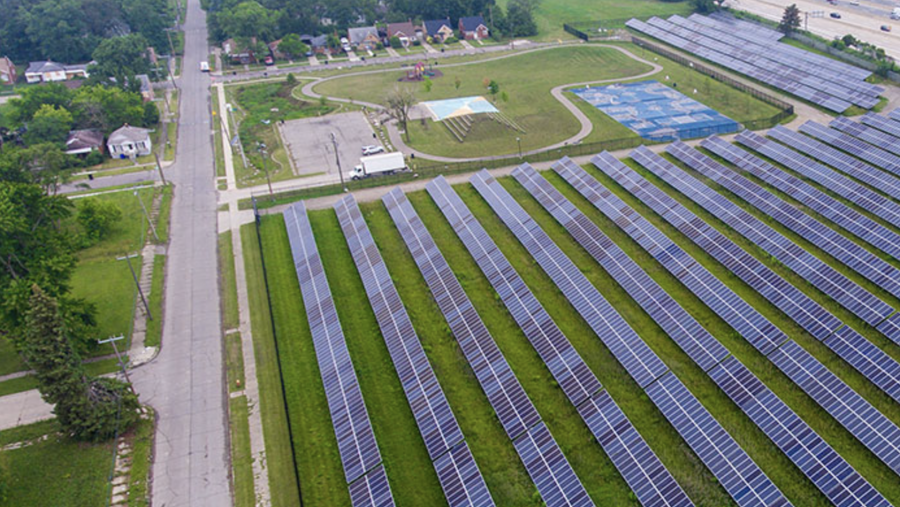Nearly 1 in 4 Americans have zero emergency savings — these under-the-radar strategies can help
By Lane Gillespie, Bankrate.com
Try as we might to avoid it, sudden, expensive emergencies can happen to anyone. A pet might need an unexpected vet visit, your car might need a replacement part or you may experience a layoff. That’s where emergency savings come in: By keeping a savings fund that you only use for emergencies, you can have peace of mind knowing you can tackle any big expense that comes your way.
While keeping an emergency savings fund is important, if you’re working with a tight budget, it may not be easy for you to put aside a few thousand dollars. In fact, nearly a quarter (24%) of Americans say they have no emergency savings, according to Bankrate’s Emergency Savings Report.
Americans have struggled to save for years — since 2011, the percentage of people without emergency savings has bounced between 21% and 29%, according to Bankrate’s Emergency Savings Report, which has tracked people’s emergency savings habits for 14 years. But rising prices since 2022 have made it even harder to save money. While the inflation rate has fallen since its 2022 high, Americans are still struggling with the price of their everyday purchases. Several years of rising prices have led to Americans paying 24.3% more for consumer goods since February 2020, when the COVID-19 pandemic began in the U.S., according to a Bankrate analysis of Bureau of Labor Statistics (BLS) data.
Inflation wouldn’t sting as much if Americans received yearly pay raises to match, but wages over the last year haven’t grown fast enough to beat inflation, according to Bankrate’s Wage to Inflation Index. If your income has been stagnant and your everyday expenses are growing more expensive, you’ll have limited funds left over to stash away for savings.
Without emergency savings, you may need to turn to credit cards or borrow money in a pinch, and that’s what many Americans are doing when in financial need. A quarter (25%) of Americans would use a credit card to pay for an unexpected $1,000 emergency expense and pay it off over time, according to December 2024 data from Bankrate’s Emergency Savings Report. With credit card interest rates being over 20%, paying off an emergency expense with a credit card over time will cost you significantly more due to interest charges.
Snowballing economic factors are making it harder to save, especially for younger generations
In a perfect world, you would save at least 20% of your income across retirement accounts, emergency savings and other savings accounts. That’s part of the “50/30/20” rule, which advises you to spend 50% of your income on necessities, 30% on wants and 20% on savings. However, many people are likely to be spending a lot more than 50% of their income on necessities — squeezing the amount they can save.
Consumer prices rose 2.7% year-over-year in June, according to the BLS — the highest annual inflation rate since February. Americans are also squeezed on housing: Nearly half of renters spend more than 30% of their income alone on housing costs, according to the BLS. Similarly, 27% of homeowners pay more than 30% of their income on housing costs, according to product research company Chamber of Commerce.
Add in transportation costs and the rising cost of groceries, and you may easily find yourself cutting into your savings to afford necessities.
While many Americans, regardless of age, are struggling to save money, younger generations today are facing additional stressors that are making saving even more difficult. The labor market is showing signs of weakening, and recent college graduates are particularly struggling to find work as companies slow down on hiring and as AI swallows up entry-level white-collar jobs, according to the Wall Street Journal. What’s more, their spending on non-essentials hasn’t slowed down. Gen Zers (ages 18-28) are the most likely generation to spend more on travel, dining out and live entertainment year-over-year, according to Bankrate’s Discretionary Spending Survey.
Now, Gen Zers and millennials (ages 29-44) are more likely than older generations to have no emergency savings, according to Bankrate’s Emergency Savings Report:
Americans who have no emergency savings in 2025
- Gen Zers (ages 18-28): 34%
- Millennials (ages 29-44): 28%
- Gen Xers (ages 45-60): 24%
- Baby boomers (ages 61-79): 16%
The youngest American adults will likely always have less savings than older generations, since they’re relatively newer to saving. But younger Americans are starting their savings journeys today with added financial barriers that previous generations didn’t face to the same extent. Today’s young adults are kicking off their careers with fewer job prospects and high prices. This can take a toll — 46% of Gen Zers say money negatively impacts their mental health, at least occasionally, according to Bankrate’s Money and Mental Health Survey. This stress has also led to many Gen Zers feeling that planning for their future is pointless, according to CNBC. Without the motivation — or the funds — to save money, more Gen Zers year-over-year have no emergency savings, according to Bankrate:
Americans with no emergency savings, 2024
- Gen Zers: 29%
- Millennials: 34%
- Gen Xers: 31%
- Baby boomers: 16%
How to start — and maintain — an emergency fund when high prices make it harder to save
No matter your age, if you haven’t already started saving, it’s vital to start now, even if it’s only $10 or $20 a month. Building savings is a muscle you need to train — it may be difficult at first, but you’ll be glad to see your progress later.
1. Identify your ‘survival number’
An emergency savings fund should have at least three to six months of expenses stashed away, which is enough to cover most emergencies, like a job loss, car repair or emergency room bill. Saving this amount can be intimidating, but it’s more attainable than it seems.
If you spend $4,000 a month on recurring expenses, such as your rent, utilities, phone bill, groceries and transportation, that doesn’t actually mean you need to save $12,000 to $24,000 in your emergency savings fund. Your emergency fund can be based on your “survival number,” or the minimum amount of expenses you need to survive.
“Every few months or so, I like to go through my budget and identify my six-month survival number,” says Bankrate U.S. Economy Reporter Sarah Foster, who has tracked U.S. wages and inflation for the past several years. “That means including things like rent, utilities and groceries — not nice-to-have extras like streaming subscriptions or monthly facials and manicures. This number usually looks different from my regular budget, and that’s the point. It makes the goal feel more realistic.”
To know your survival number, check your budget and split your expenses into two categories: necessities and non-necessities. Necessities will include your:
- Rent or mortgage
- Utilities, phone and internet
- Insurance and health care co-pays
- Loan payments, such as a car loan, minimum credit card payments and student loans
- Basic groceries, household supplies and pet food
- Transportation costs
Non-necessities will include everything else, including subscriptions, eating and drinking out, personal grooming expenses, hobbies and more — everything you’re able to cut if you lose your job or otherwise need to fall back on your savings.
If you spend $4,000 a month on recurring expenses, you might realize you only spend $3,000 a month on necessities. That means you only need to save $9,000 to $18,000 in your emergency savings fund, which is much more attainable.
2. Start with a savings sprint
If you want to start saving for emergencies, you may need to cut down on spending to make room in your budget. But it can be challenging to suddenly cut down on everyday luxuries like ordering coffee out or getting your nails done.
The good news is, you don’t need to cut out luxuries permanently. To give yourself a head start on your savings, consider a savings sprint. Try cutting out non-essential expenses for a set period of time, such as four or six weeks. Set a savings goal, such as $500, that you can reasonably meet in that time by cutting out non-essentials. Set that money aside in a separate savings account — and don’t touch it.
When the savings sprint timeframe is up, you can go back to spending money on non-essentials — but use that time to figure out what is important for you to spend money on. For example, if after the sprint is up, you realize you actually don’t miss spending money on coffee shops, you can continue funneling that money toward your savings.
It can be hard to find the motivation to keep saving if you are only putting aside a small amount each month. However, a savings sprint gives you a jump start on your emergency savings, providing a motivational boost to watch your savings grow.
3. Make your bank account work for you
You can open a basic savings account at most banks where you keep your main checking account. But keeping your checking and savings accounts close together can make it all too easy to dip into your savings for non-emergencies.
Instead, try opening a savings account with a separate bank from the one where you keep your checking account. It takes several days to transfer funds between most banks, which will discourage you from dipping into your emergency savings too easily.
Any savings account will work to stash your savings, but you might want to consider a high-yield savings account (HYSA), which will offer a higher interest rate than a traditional savings account, which will help your savings grow even faster.
Also, try auto-depositing your savings directly into the account (also known as paying yourself first). By remaining hands-off, it’ll be easier to maintain your new savings habit.
You can keep your savings in one lump sum in a savings account, but some banks today allow you to go one step further. You can split up your funds into savings buckets, meaning you can assign roles to your funds:
Savings buckets let you know where your savings are going by separating them according to your goals, such as an emergency fund, travel fund or house down payment. Not only does this allow you to avoid touching your emergency funds when withdrawing money for a vacation, it serves as a constant reminder of the reasons why you’re saving in the first place.
The bottom line
Saving money isn’t always easy, but it’s vital for your financial health. If you don’t feel like you have enough room in your budget to save, consider cutting expenses where you can by examining your subscriptions, setting spending limits and cutting down on unnecessary spending. Or, you can try selling unwanted possessions or even picking up a side hustle.
Key takeaways:
- Nearly a quarter of Americans don’t have an emergency savings fund. If you’re one of them, that puts you at risk of taking on significant debt.
- It can be challenging to start and maintain an emergency savings fund. Determining the minimum you need to save and starting with a savings sprint can help.
- Opening a high-yield savings account will help you grow your savings without the temptation to use the funds for day-to-day spending.
©2025 Bankrate.com. Distributed by Tribune Content Agency, LLC.


































